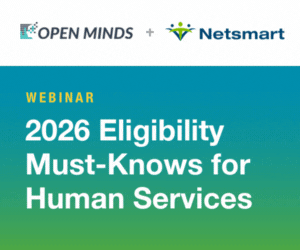If there are two things to know immediately about mergers—they seldom work, and a lot of organization’s are still trying them. To the first point, a recent study found that mergers failed between 50% and 85% of the time (see Make M&A Work For Your Organization). And to the second point, recent reports show that…
[caption id="attachment_803503" align="alignleft" width="100"] David Guth, Chief Executive Officer at Centerstone[/caption]
How to think strategically about mergers, acquisitions, and affiliations (MA&A) is a substantial challenge for executive teams, particularly executive teams of non-profit organizations. But the “right” answer for “what is strategic” completely depends on the kind of affiliation you are attempting. One model…
[caption id="attachment_872783" align="alignleft" width="150"] Mike Lyons, Strategy & General Counsel, Mosaic[/caption]
The health and human service space is seeing a lot of consolidation, through mergers, acquisitions, and affiliations (MA&A). There was a 14.4% growth in “health care” MA&A activity between 2017 and 2018, and an astounding 52% increase in behavioral care mergers over that…
[caption id="attachment_872379" align="alignleft" width="150"] Patrick Maynard, Ph.D., Chief Executive Officer, I Am Boundless, Inc.[/caption]
It is no great surprise that many discussions surrounding mergers, acquisitions, and affiliations (MA&A) automatically default to finding and/or building economies of scale. Being “bigger” may offer a path to better services for larger populations and a larger reservoir of…
North Carolina took a bold step in 2005 when it established a pilot program under a federal Medicaid waiver to provide public managed care to individuals with intellectual/developmental disabilities (IDD) and those experiencing mental illness and substance use disorders (SUDs). The state’s vision for this pilot was to ensure that individuals with the most significant…
Hurricane season is here once again, reminding us of the importance of emergency preparedness, especially when it comes to maintaining patient records during an emergency. In the wake of any disaster, it’s vital to have a plan in place. Power outages and loss of connectivity can pose major obstacles when working to continue care for…
[caption id="attachment_872429" align="alignleft" width="150"] Donald Parker, LCSW, President, Hackensack Meridian Health Carrier Clinic[/caption]
In recent years, we have seen some big industry changes among organizations that decide to go down the path of mergers, acquisitions, and affiliations (MA&A), and executives of those organizations need to know how to navigate that process—from planning to partner selection…
Among advanced countries, the US has a unique problem with mass violence — defined as crimes in which four or more people are killed in an event or related series of events. A substantial majority occurs by shooting. Both the rate at which mass shootings occur and the number of people killed are increasing. Frequently,…
The majority of the population in the state of Delaware is enrolled in a commercial health insurance plan (59%)—this is above the national average of 56%. About 18% of the population is enrolled in Medicaid, which is above the national average of 17% (to learn more about the state’s health care system, Elite OPEN MINDS…
The majority of the population in the state of Missouri is enrolled in a commercial health insurance plan (60%)—this is above the national average of 56%. About 12% of the population is enrolled in Medicaid, which is below the national average of 17% (to learn more about the state’s health care system, Elite OPEN MINDS…
The majority of the population in the state of Hawaii is enrolled in a commercial health insurance plan (57%)—this is above the national average of 56%. About 18% of the population is enrolled in Medicaid, which is above the national average of 17% (to learn more about the state’s health care system, Elite OPEN MINDS…





